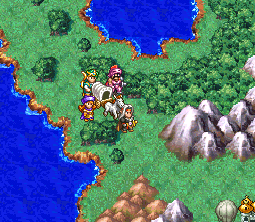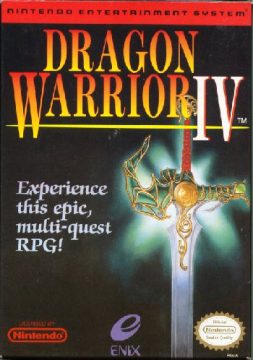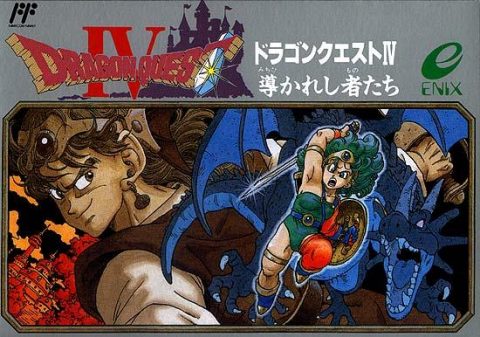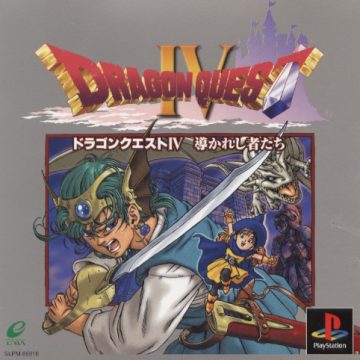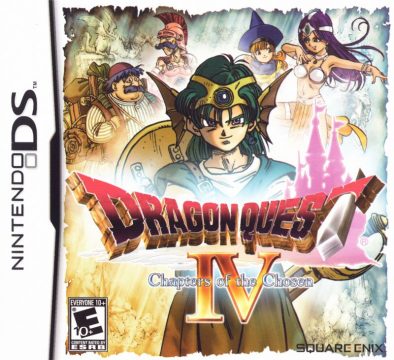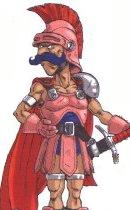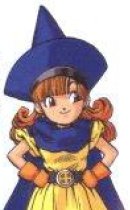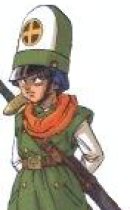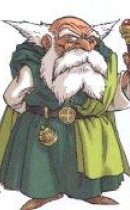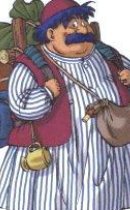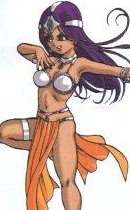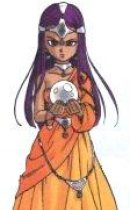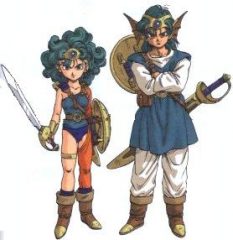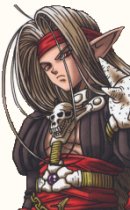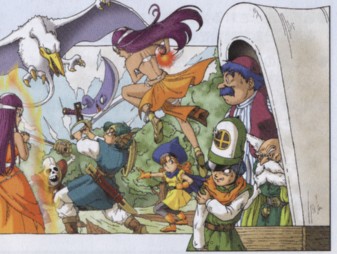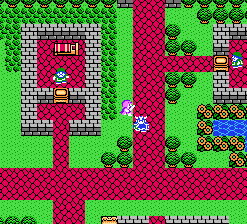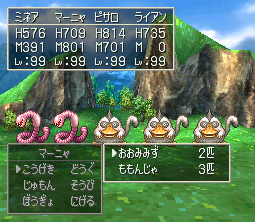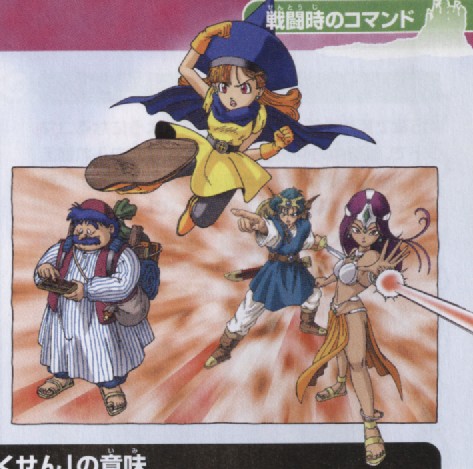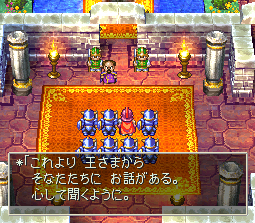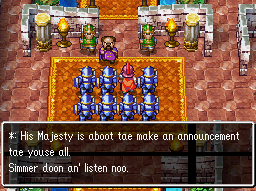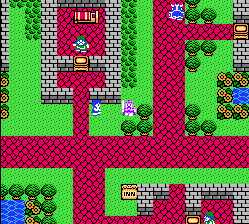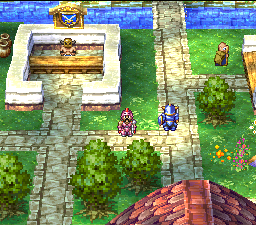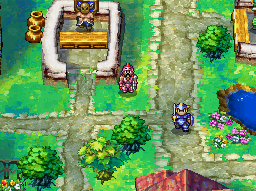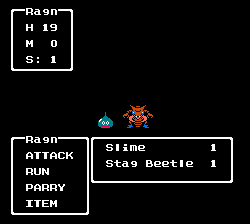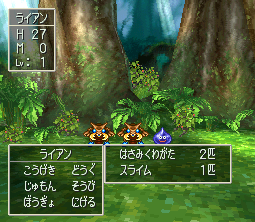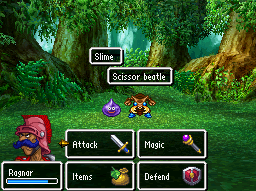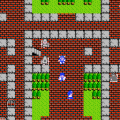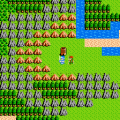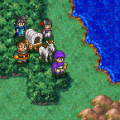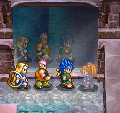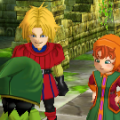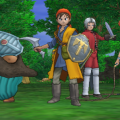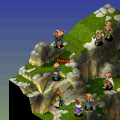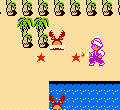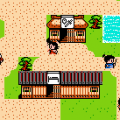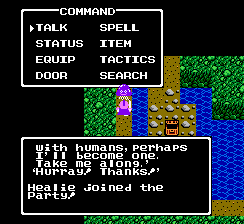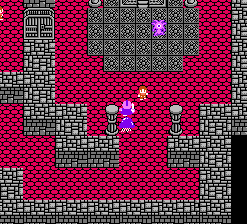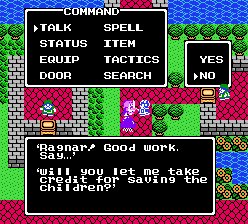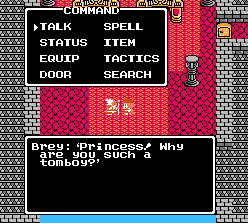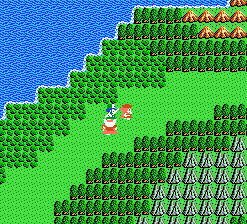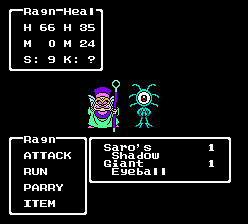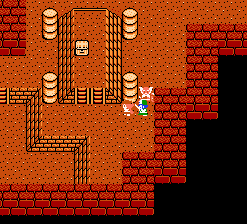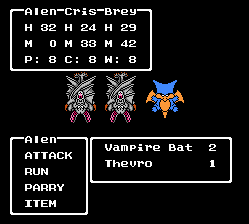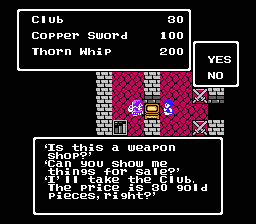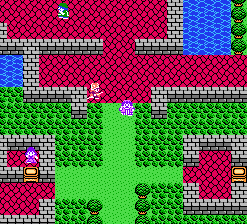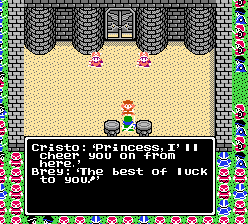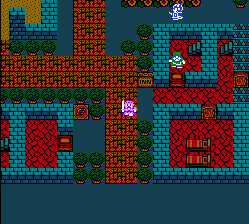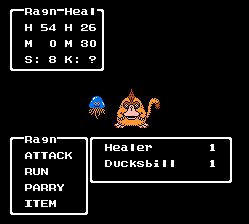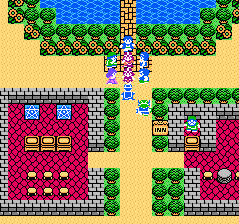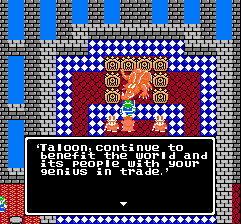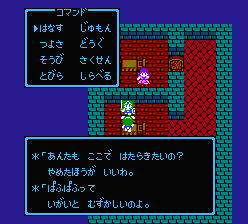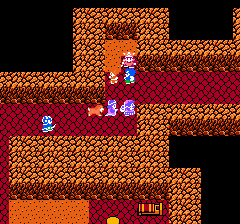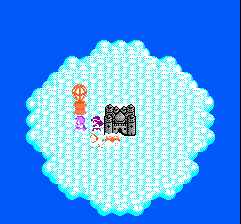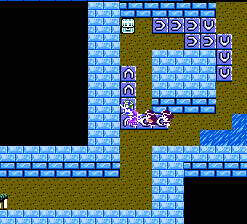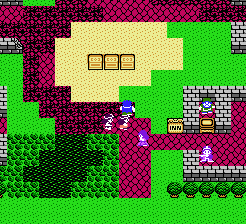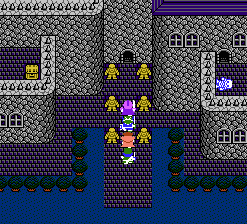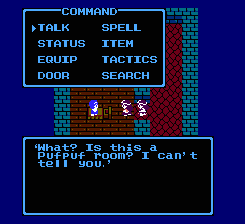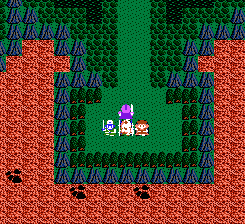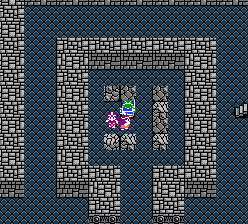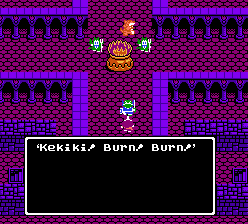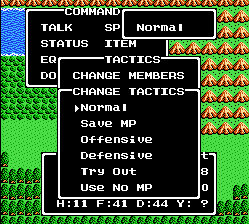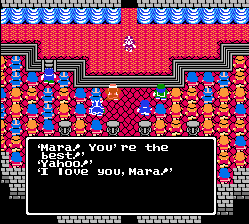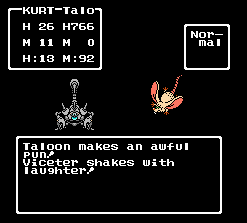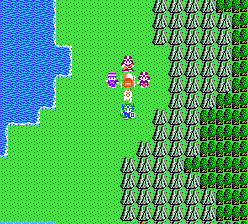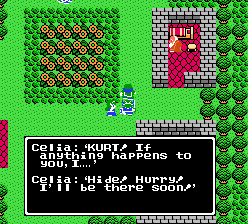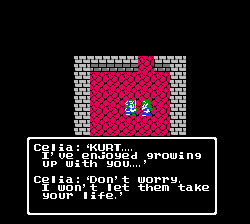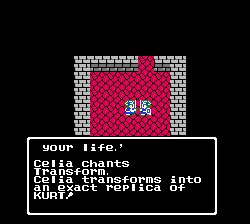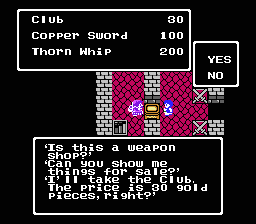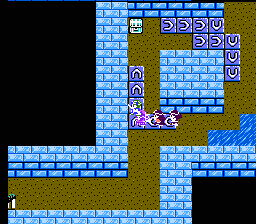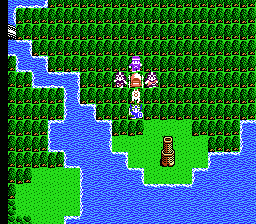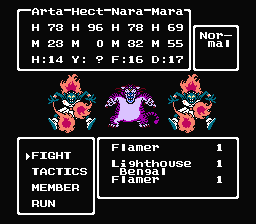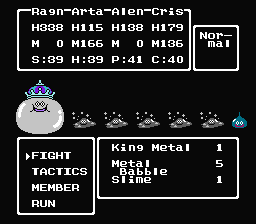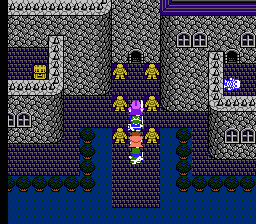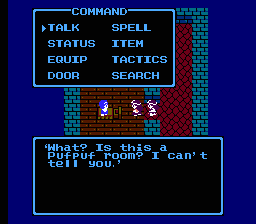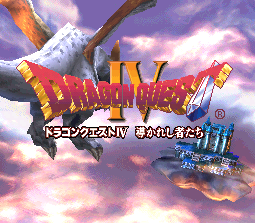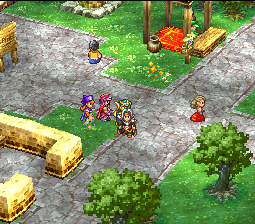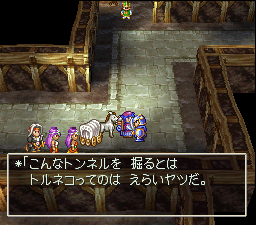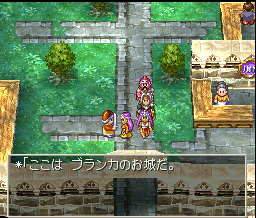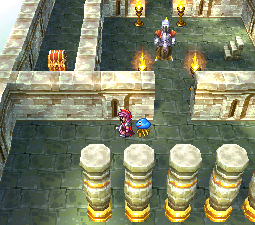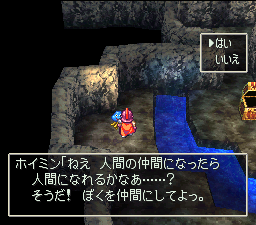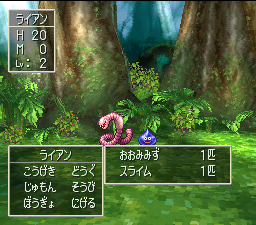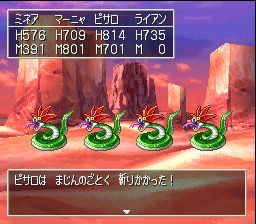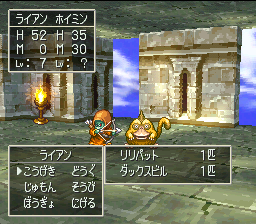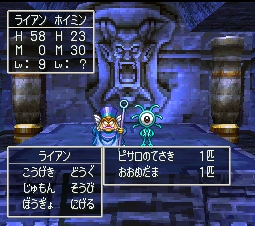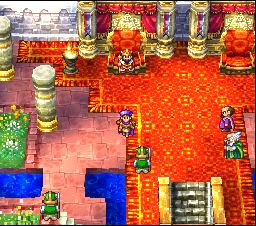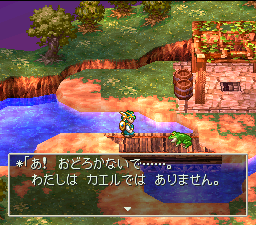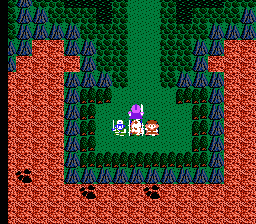- Dragon Quest (Introduction)
- Dragon Quest
- Dragon Quest II
- Dragon Quest III
- Dragon Quest IV: The Chapters of the Chosen
- Dragon Quest V: Hand of the Heavenly Bride
- Dragon Quest VI: Realms of Revelation
- Dragon Quest VII: Fragments of the Forgotten Past
- Dragon Warrior VIII: Journey of the Cursed King
- Dragon Quest XI: Echoes of an Elusive Age
- Slime Mori Mori Dragon Quest
- Dragon Quest Heroes: Rocket Slime
- Slime Mori Mori Dragon Quest 3
- Dragon Quest Heroes
- Dragon Quest Heroes II
Like all of the others, Dragon Warrior IV (subtitled “Michibikareshi Monotachi” or “The Chosen Ones”) begins by asking the player for their name, but it quickly switches gears and introduces something completely different. The story is broken up into five different chapters, each taking place in the same world but starring different characters. Each of the first four chapters are fairly short, usually taking only a few hours to complete, but the final chapter sees all of the party members coming together in a quest longer than any of the previous games.
Chapter 1 – The Royal Soldiers / Ragnar McRyan and the Mystery of the Missing Children
In the opening story, Ragnar sets off alone to investigate the mystery of some missing children, which is a pretty simple and straightforward quest. Along the way, he recruits Healie, a healslime that wishes it were human. This is the first instance of a monster joining your party, something which was drastically expanded upon in later games. In the DS game, everyone in the kingdom of Burland speaks in thick Scottish brogues.
Chapter 2 – Princess Alena’s Adventure / Alena and the Journey to the Tourney
Alena
Alena is a tomboy princess who’s sick of life in the castle and wants to explore the outside world. After escaping from her bedroom, she’s joined by her two aides Cristo and Brey, who set off on adventure together. Despite her diminutive size, she’s a competent fighter. Breaking the common stereotype, she’s also a female who can’t use magic.
In Chapter 2, Alena and her guardians escape from the castle in search of adventure. Their light-hearted meanderings eventually turn serious when danger threatens the kingdom, and it’s up to Princess Alena to save not only her father, but her entire kingdom. While Ragnar’s chapter is pretty straightforward, this is one is a bit more involved, especially since you now control two characters who are primarily magic users, and one single character who focuses on physical attacks. Everyone in the kingdom speaks with broken English mannerisms that are supposed to sound Russian.
Chapter 3 – Taloon the Arms Merchant / Torneko and the Extravagent Excavation
Taloon / Torneko / Torneko Taloon
Torneko is a simple merchant who’s grown sick of working for The Man, and wants to start up his own shop. He begins his quest by leaving behind his family for the big city, but eventually gets caught up in a quest for some powerful weapons. Taloon is pretty weak, so he can hire mercenaries to protect him. Later in the game, he randomly executes amusing attacks, like telling bad jokes to enemies to stun them, or cover their mouths to prevent them from casting magic, or calling armies of fellow merchants to bum rush your foes.
Chapter 3 is a huge departure from most RPGs. At a certain point in your quest, your goal is simply to amass as much money as quickly as possible. You can do this any number of ways. You can kill enemies like in any other chapter, and since Taloon is a Merchant, enemies drop treasure chests more frequently. You can work in your boss’s shop, deciding what prices to sell items for or what items to take into stock. Once you buy your own shop, you can take the profit or equipment and use them however you want. You can raid the local caves and sell their treasures, since Taloon can’t equip most of it anyway. A lot of this has an Indiana Jones-style vibe, right down to a very particular puzzle – like the intro Raiders of the Lost Ark, there’s a precious statue on top of a switch. You need to push a boulder into the room, grab the statue, push the boulder on the switch, and then escape. If you simply dash in and grab the statue without bringing anything of equal weight, you’ll get trapped in the room. In the DS version, everyone speaks with an Irish accent.
Chapter 4 – The Sisters of Monbaraba / Meena and Maya and the Mahabala Mystery
Mara / Manya / Meena
Mara is a Dancer, and elder sister of Nara. The two set off from Monbaraba to hunt down their father’s murderer. She’s primarily an offensive magic user, and as her sexy appearance suggests, is a bit louder than her reserved sister.
Compared to Taloon’s – and even Alena’s chapter – Mara and Nara’s story is relatively short, but they’re still pretty cool characters for such an old game. They’re also aided by a chap named Orin, who is a more typical warrior. At the end, they still haven’t avenged their father’s murder, but have learned a bit about their goals. In the DS version, everyone speaks with a French accent.
Chapter 5 – The Chosen Ones / The Chosen
The Hero
Many hours after you’ve entered the name of your hero, you finally get to step in their shoes in the fifth and final chapter. Much like Dragon Warrior III, you can choose whether the hero will be male or female – and this time, the sprite actually looks different. Compared to how specializes all of the rest of cast is, the hero is the most real rounded, and thus the most powerful. The “default” names are “Solo” for the male Hero, and “Sophia” for the female Hero.
In this chapter, you assume the role of the Hero, who is being raised in a remote, unnamed village. Apparently, you have some kind of special powers, and with along with them, an important destiny. Not long after the chapter begins, your village is suddenly attacked by monsters looking for your blood. You’re hidden away, and your best friend – a shapeshifter – assumes the your form to get killed in your place. Thinking their task is completed, the monsters leave, with the Hero crumbling from the ruins of their hometown to discover the reasons behind this tragedy. You must travel the world and regroup with all of the characters of the previous chapters and take down Necrosaro together. You learn that all of the previous stories were simply building up to this tragedy by highlighting a number of troubles in the world, but here you finally get to take down the bad guys. This is by far the longest chapter in the game.
Chapter 6 – The Road to the Happy End
This chapter is only found in the PlayStation and DS releases. It’s pretty brief, but focuses on Psaro and revealing the reasons behind his crusade against the world, and his attempt to find peace by defeating one of his subordinates.
Although the battle system is the same as its predecessor, Dragon Warrior IV introduces AI-controlled characters. In many of the chapters, you only control the main character, and all other party members attack automatically. It’s especially bizarre in the NES version, when you get to the final chapter, and you can only control the hero – the rest of the characters, who were previously under your command, now act on their own accord. You can set “tactics” to modify their behavior a bit, and most of the time, the AI works pretty well, but some of the spellcasters can be a dimwitted, constantly using spells that are ineffective. While this speeds things up, it also makes battles less involving when you’re only giving orders to a single character. Thankfully, the PlayStation and DS versions let you fully control your characters.
Also, there are a total of eight heroes in the final chapter, and you only control four at once in battle. In order for you to be able to control all of them, Dragon Warrior IV introduces the Caravan. At any time in battle, you can swap characters in and out of your party. However, the Caravan can’t be taken into certain areas like caves, so whenever you go dungeon crawling, you’re limited to four people.
A number of other additions have been introduced to Dragon Warrior IV, including casinos, where you can gamble away your cash and earn exclusive items. Also new is the Medal King – there are now tons of Medals hidden throughout the world, and they can be used to purchase even more exclusive items. The day/night cycle from Dragon Quest III has also been retained. You can also save your game at churches, which can be found in practically any town in the world.
Dragon Quest IV was eventually ported to the PlayStation in 2001, using the same engine as Dragon Quest VII. The graphics have been upgraded to use 3D landscapes and 2D sprites. Naturally, much like Dragon Quest VII, it’s a bit on the ugly side, but it’s still a big step up from the NES version, especially seeing as how the character sprites actually have some level of detail. The enemies in battle now have attack animations, and there are visual effects with some of the spells. The music has also been enhanced, and actually sounds better than Dragon Warrior VII (though that may be just because Dragon Quest IV has a better soundtrack anyway.) The improvements are more than just skin deep, as there are plenty of enhancements that make this a more complete experience.
For starters, there’s a new prologue where you play as the Hero and walk around their town for a bit. In the FC/NES version, you’d name your character, and wouldn’t be introduced to them until late in the game. The remake totally loses that, but it’s cool to see your transforming friend, whom you get to play around with a bit. Then you see what happens to her by the time the fifth chapter rolls around, and it’s all the more crushing, so it balances out. There’s also, of course, the brand new six chapter. The immigrant town from Dragon Quest VII also shows up here, as well as the Bag, the Monster Book, the Talk function, and other additions that were added in the later games.
More importantly, however, is that you can now turn off the AI and control all of your party members manually. As a result, some of the attacks and spells have been toned down, as to not make the game too easy (they could be pretty overpowered when the computer controlled your party) but it basically fixed the one major problem with Dragon Quest IV. This version was scheduled to come out in America – it’s actually advertised on the back of the Dragon Warrior VII manual – but was cancelled when the Japanese studio closed down, so the tools required for localization were unavailable.
Dragon Quest IV was also released for the DS in 2007 in Japan, and 2008 in North America and Europe, with the new subtitle “Chapters of the Chosen”. It’s ported by Arte Piazza and is based on the PlayStation version, but with a number of enhancements. The caves and dungeons are displayed on both screens, while the towns have a small illustrated map detailing where all of the stores are, and the overworld displays the map of the whole land. The battle interface has been redone, and the menus now finally use the Toriyama artwork as character portraits. There’s no stylus controls at all, though. All of the monsters have idle animations in addition to attack animations. It’s amazing how much more alive the game feels, especially given how fluid everything looks. In general, the game moves a bit faster, with quicker attack animations and tightened environments, which creates a faster sense of pacing. Even the music is a bit better than the PlayStation game. The immigrant quest (called “Boom Town” in English) has been changed (and dumbed down) and the bonus dungeon is completely different from the PlayStation game. There’s also some orchestral music played in the intro, and some throwaway wireless trading options.
The whole script has been redone, with each of the lands having different accents. Sometimes it gets thick and a bit hard to read, but it lends some color to the dialogue. Many of the names have been changed, with some attempts to explain the differences between the old Dragon Warrior IV character names Ragnar/Rian is now named “Ragnar McRyan”, and Taloon/Torneko has become “Torneko Taloon”. Some of them were completely renamed altogether, and many towns have different names too. Unfortunately, the Talk option has been inexplicably removed from the North American and European releases, removing some of the character interactions. It’s also been censored a bit to meet the E10 ESRB rating, by removing the Puff Puff rooms. The iOS/Android version is based on the DS version, though it actually adds the Talk option back in, thus technically making it the definitive English version, if you can stand the touch controls.
